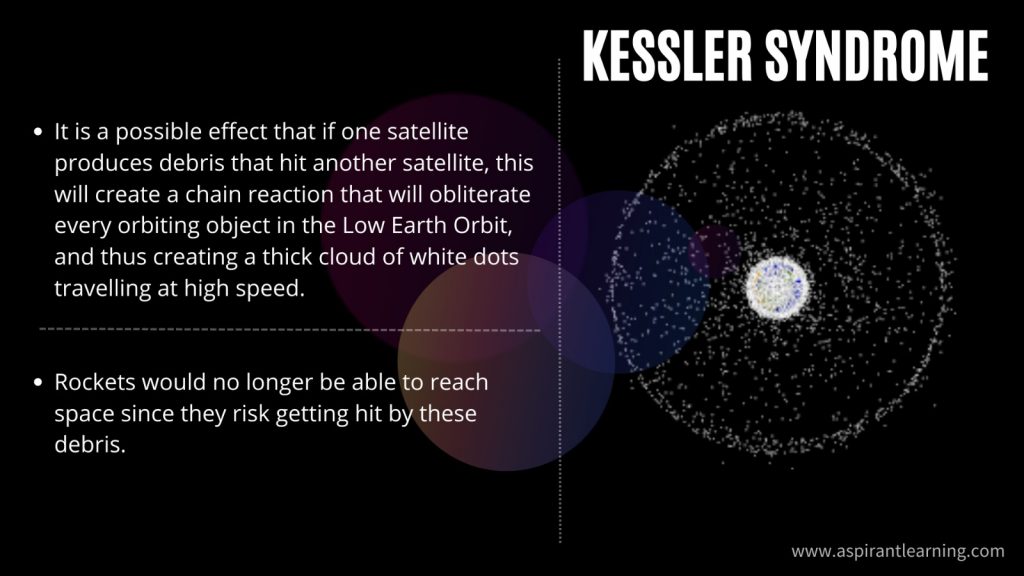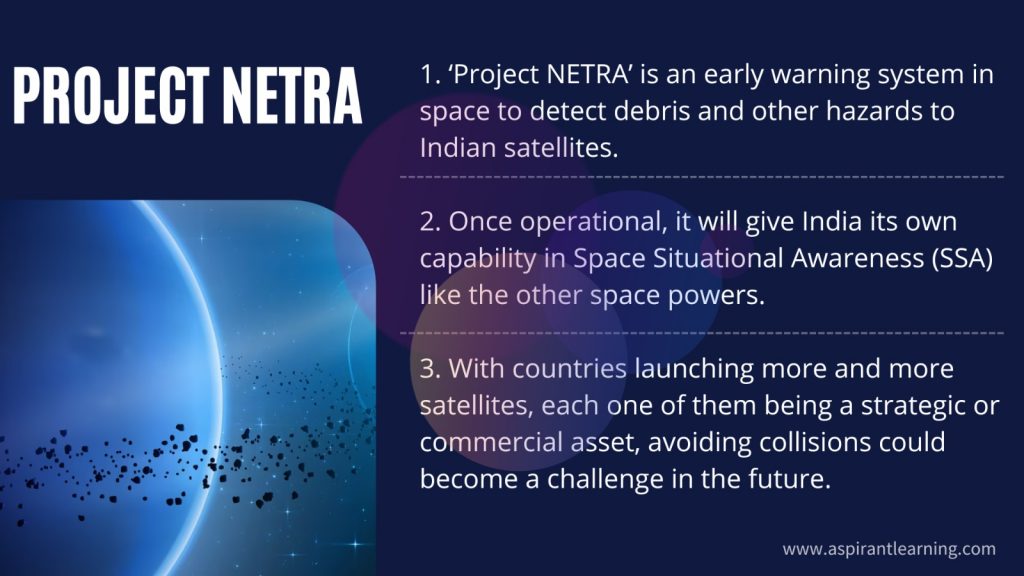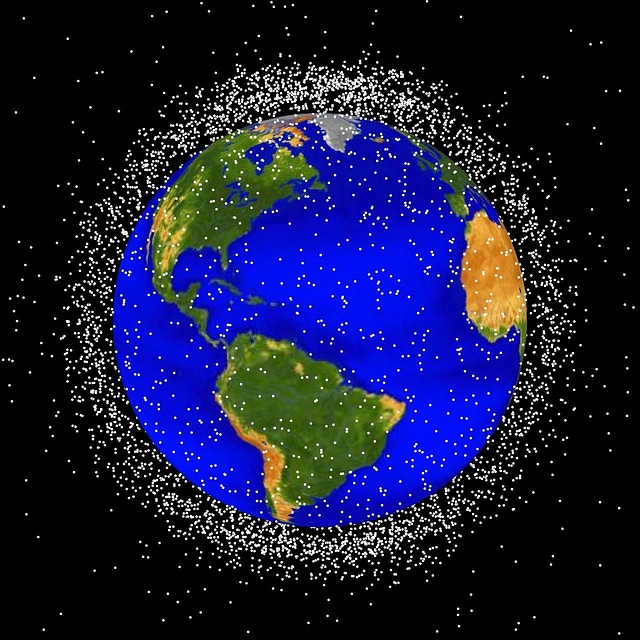News Highlights:
Space debris objects: As per GOI, India has 111 payloads and 105 space debris objects orbiting the earth as tracked and catalogued by USSPACECOM.
Key Takeaway:
- All orbiting debris will impact the sustainability of outer space and future missions.
- ISRO has been carrying out many studies on the impacts of growing space debris on the space environment.
- Indian Space Research Organisation (ISRO) has carried out 21 collision avoidance manoeuvres of Indian Operational Space assets in 2022 to avoid collision threats from other space objects.

Space debris:
- About:
- Space debris is an artificial material that is orbiting Earth but is no longer functional.
- These include derelict spacecraft, fragmentation debris from the breakup of derelict rocket bodies, solidified liquids expelled from spacecraft, unburned particles from solid rocket motors, etc.
- Space debris orbits around the earth at tremendous speeds of about 15,700 miles per hour (25,265 kph) in low Earth.
- There are half a million pieces of debris larger than 1 centimetre and 100 million pieces of debris-about one millimetre or larger.
- It could cause significant damage to a satellite or a spacecraft in case of a collision.
- History:
- Space debris began to accumulate in Earth’s orbit immediately with the first launch of an artificial satellite Sputnik 1, into orbit in October 1957.
- Potential Threat:
- The floating space debris is a potential hazard for operational satellites, and colliding with them can leave them dysfunctional.
- This overpopulation of space with objects and debris is called Kessler Syndrome.
- The accumulation of space debris in specific orbital regions can limit the availability of desirable orbital slots for future missions.
- The increasing amount of space debris makes it more challenging for satellite operators and space agencies to accurately track and accurately predict the orbits of objects in space.
- Status of Orbital Debris:
- According to ESA’s Space Debris Office, in almost 60 years of space activities, more than 5200 launches have placed some 7500 satellites into orbit, of which about 4300 remain in space; only a tiny fraction, about 1200, are still operational today.

Indian Initiatives:
- Safe and Sustainable Operations Management (IS 4 OM):
- In 2022, ISRO set up the System for Safe and Sustainable Operations Management (IS 4 OM) to continually monitor objects posing collision threats, predict the evolution of space debris, and mitigate the risk posed by space debris.
- Collision avoidance manoeuvres:
- ISRO also carried out 21 collision avoidance manoeuvres of Indian operational space assets in 2022 to avoid collisions with other space objects.
- Centre for Space Debris Research:
- ISRO has also set up a Centre for Space Debris Research to monitor and mitigate the threat of space debris.
- Project NETRA:
- ‘Project NETRA’ is also an early warning system in space to detect debris and other hazards to Indian satellites.
Pic Courtesy: Pixabay
Content Source: Economic Times



